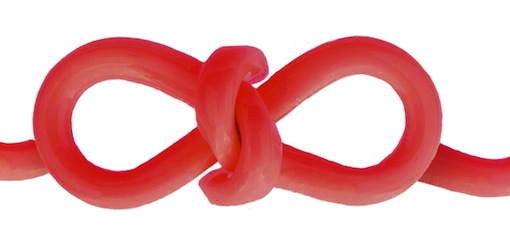Tis’ the Season
Posted by on November 15, 2012
“‘Invented tradition’ is taken to mean a set of practices, normally governed by overtly or tacitly accepted rules and of a ritual or symbolic nature, which seek to inculcate certain values and norms of behaviour by repetition, which automatically implies continuity with the past.” (Hobsbawm, 1).
Steven Weber’s book The Success of Open Source, motivated me to understand the social norms and human behaviour behind the idea. Simply understood, open source software is that which is published along with its source code, allowing developers to collaborate, improve upon each other’s work, and use the code in their own projects. This idea of openness is now seen not only in software communities, but also to political and cultural groupings. The concept of openness is attractive because it requires mutual understandings and an unspoken coordination between people. A common open source practice that all culture’s share is the tradition of gift giving.
A great act of gift giving was seen after Hurricane Sandy when thousands donated blood to help those in need. At least 16 states have had to cancel or postpone blood drives due to the shortage of blood and platelets in blood banks nationwide after the storm. Not only have hospitals been over surged with the amount of people willing to help, but places like Greenhouse Cafe, Walgreens and the Brooklyn Borough President’s Office have set up for blood drives.
The experience of blood donation is intimidating; it comes with paper work, very intimate questions and often a lineup of people. After answering a few questions, it is time to recline, relax and have a needle pump blood from you for 10 minutes.
So why do people go through this seemingly awful experience? Why would any person choose to contribute to society, and go unrecognized and unpaid? From experience, the atmosphere of a drive is amazing. An intense feeling of support and enthusiasm resiliency of the human spirit int he face of disaster seems to make the paperwork worth it.
Open source relies on social organization, cooperation and production without any obvious incentive. Canadian donors are unpaid, but sometimes an incentive is to give blood when family or friends need a transfusion. In both Studio and Design Led Research, incentive has been an obstacle. The marketing campaign’s slogan for giving blood in Canada is ‘Blood, it’s in you to give.’ The incentive for giving blood is the satisfaction of saving lives. Whether altruism truly exists is speculative, but the reward for donors seems to be as simple as a strong support system and the feeling of self-gratification.
Blood donation works because the incentive is not a tangible reward; it is based on empathy and identification with a community. Blood donation creates ‘social cohesion of the membership of groups, real or artificial communities.’ (Hobsbawm, 9). It has a personal sentiment, whether the person you are donating for is known to you or not. Gift giving is a tricky subject because of the emotional aspect, but that is what determines a great incentive.
A more common example of open source is Wikipedia where flows of information are generated anonymously. Wikipedia creates a community where the motivation is to feel like part of a group as a contributor. When considering open source the community that is created is the biggest incentive. The largeness of it makes it seem worth contributing to. Like Wikipedia, blood donation also creates that community, making the contributors feel like they are part of something big.
One could argue that blood donation is not open source because not just anyone can contribute; you have to be tested and accepted. The same could be said for Wikipedia as illiteracy is prohibiting and editors are hired. Formal organization and authority is brought into place to help with large projects. It is important to see a system sustained by communities, not just professionals. However, it is difficult for a community to self organize for the production and maintenance of public goods. This is why open source takes the conventional societal hierarchal structure and adapts them to fit its needs.
Before entering the Transdisciplinary Design Program I would not have connected gift giving as an open source concept. When solving a community based design problem, incentive issues always arise. Slowly understanding the system of open source has allowed me to apply it to my practice. I am working on creating emotional satisfaction through a service to incentivize the user to participate. Luckily, we have technology that allows us to create services that are faster and more convenient, making it easier to provide incentives.
Theodor Adorno argues in Minema Moralia “we are forgetting how to give presents….the decay of giving is mirrored in the distressing invention of ‘gift-articles’ based on the assumption that one does not know what to give because one really does not want to.” I would agree that gift giving in the traditional sense has been tainted, however when examining the service of blood donation, the light on the good of humanity shines through. To bring this back to my practice, the challenges we face are: 1) How do we get more people to solve the problems rather than just professionals? 2) How can we incentivize participation? I believe the ways in which we rearrange the design process is key. Blood donation casts considerable light showing people have rights and obligations to a group and identifying with a community is important.
Hobsbawm, Eric. The Invention of Tradition. New York: Cambridge University Press, Print.
